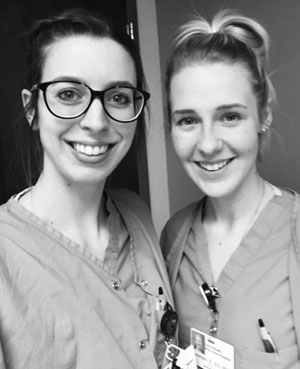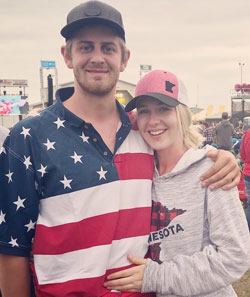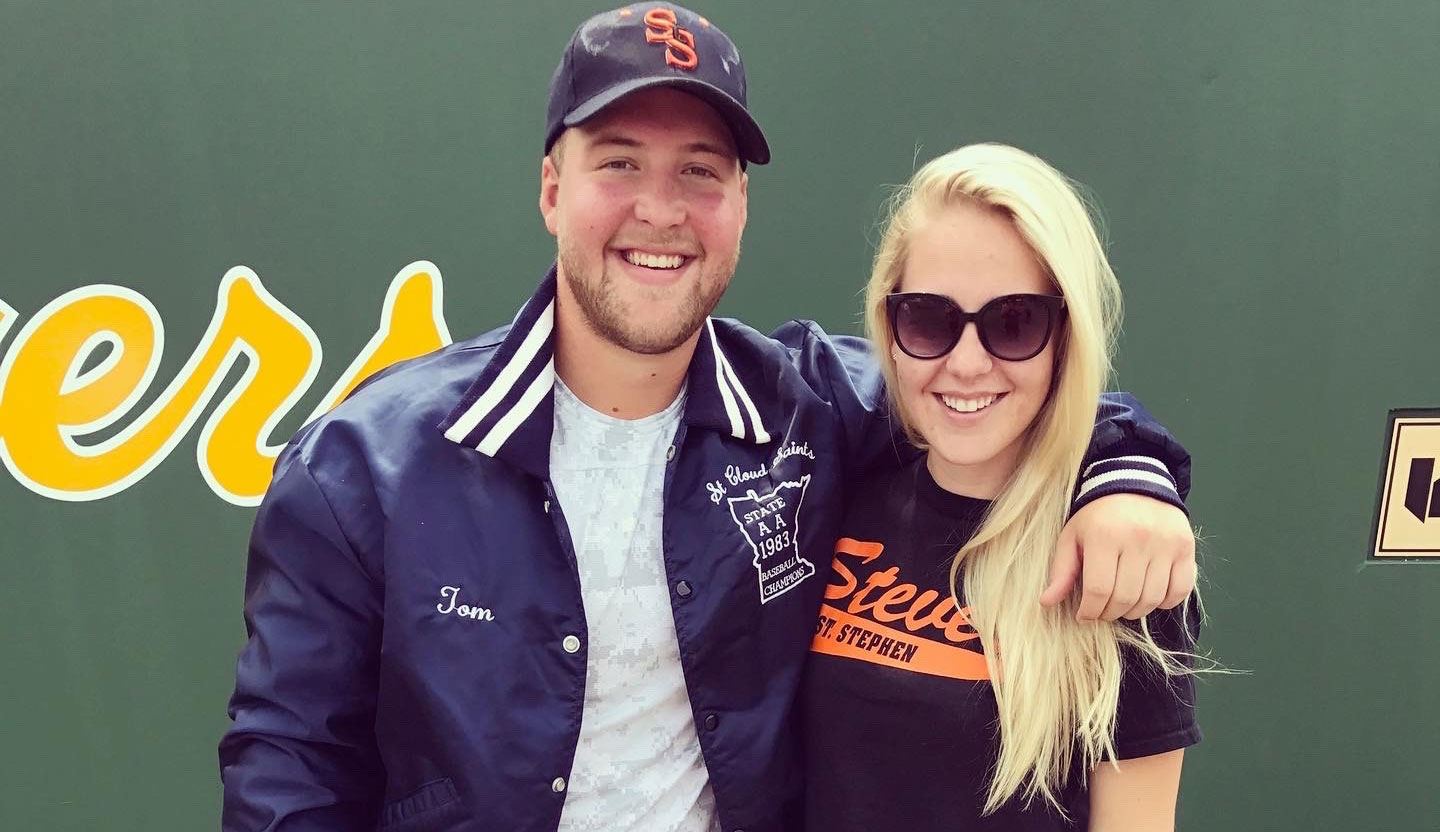Courtney's Story
Stroke Care“When I got to the ER, I looked up and recognized a nurse I had once shadowed during my time in nursing school. He had been a mentor to me. I admire and have so much trust in his ability to provide care that I knew I was going to be OK.”
Courtney Bevans went from being a healthy 26-year-old nurse on duty, taking care of patients in St. Cloud Hospital’s Post Anesthesia Care Unit (PACU) to having emergency brain surgery in the very hospital she where she was working.
Courtney recalls being at work that Friday morning in September 2018 after picking up a shift on her day off to help out during a very busy day. She was assisting a patient after surgery and was just sitting down to fill out paperwork.
“I — all of a sudden — felt as if I had been hit in the back of the head with a baseball bat. An instant pain occurred and was not going away,” she said.
In 2015, Courtney had been diagnosed with an inoperable brain tumor, so she was accustomed to headaches. But this one just didn’t feel right.
After getting a glass of water from a colleague and asking someone to be with her patient, Courtney went to the break room followed by a caring co-worker.
“She knew it was out of character for me to go sit in the break room when there was plenty of work to be done,” she said. “We knew something was not right, but we were not sure what it was.”

Alisha Voigt and Courtney Bevans
“When I got to the ER, I looked up and recognized a nurse I had once shadowed during my time in nursing school. He had been a mentor to me. I admire and have so much trust in his ability to provide care that I knew I was going to be OK.”
Courtney then went unconscious. She had an intracerebral hemorrhage, commonly called a brain bleed, or a stroke.
“My dad and brother arrived at St. Cloud Hospital and were informed of my critical condition. I was intubated and placed a ventilator to breath. Operating room staff were prepping for emergency brain surgery. I was transported to the Operating room where my family said their potential ‘Goodbyes.’”
Neurosurgeon Jeffrey Gerdes, MD, removed an egg-sized clot from the back of Courtney’s brain along with a piece of her skull from the back of her head.
“They told my family that if I had not been at St. Cloud Hospital that day, I wouldn’t have survived,” she said. “I had minutes to spare.”
Her neurologist, M. Fareed Suri, MBBS, agrees that Courtney was in the right place at the right time.
“Courtney had a life-threatening bleed that, if not treated immediately, she may not have survived. We were able to treat her here very quickly and because of that she made a miraculous recovery,” he said.

at a concert
Courtney spent 11 days in the intensive care unit (ICU) with a drain in the top of her head to reduce the pressure. The stroke affected her balance and vision to the point of where she didn’t want to open her eyes because of seeing double.
“I was used to being on the other side of the hospital bed caring for patients, and it was so hard to be the patient needing all the care."
She spent a total of 28 days inside St. Cloud Hospital, which included two weeks of inpatient rehabilitation. And once she returned home, she required constant care.
“I required a walker to be mobile. Healing was slow,” she said. “I had physical therapy, occupational therapy, vision therapy and speech therapy appointments multiple days a week.”
This routine went on for more than five months and then Courtney entered a week-long intensive rehabilitation program that allowed her to no longer need physical or occupational therapy.
Six months after her stroke, Courtney was able to accomplish her final goal: Returning to work.
"I am back working full-time as an RN in PACU, a department that is so close to the surgery department," she said. "So I often see Dr. Gerdes and take care of his patients. I am continuously reminded how fortunate I was to have him as my neurosurgeon. He has blessed me with the opportunity to continue my life. I am reminded of how lucky I am to survive and thrive."
Courtney wants others to know that stroke does not discriminate.
“I was an active 26-year-old. I didn’t have one risk factor,” said Courtney. “I think I’m a logical person and I have asked numerous times how this could happen to me. In fact, I’ve been told I had a better chance at being struck by lightning than experiencing a brain bleed. And all I can do is pray that lightning won’t strike again.”
